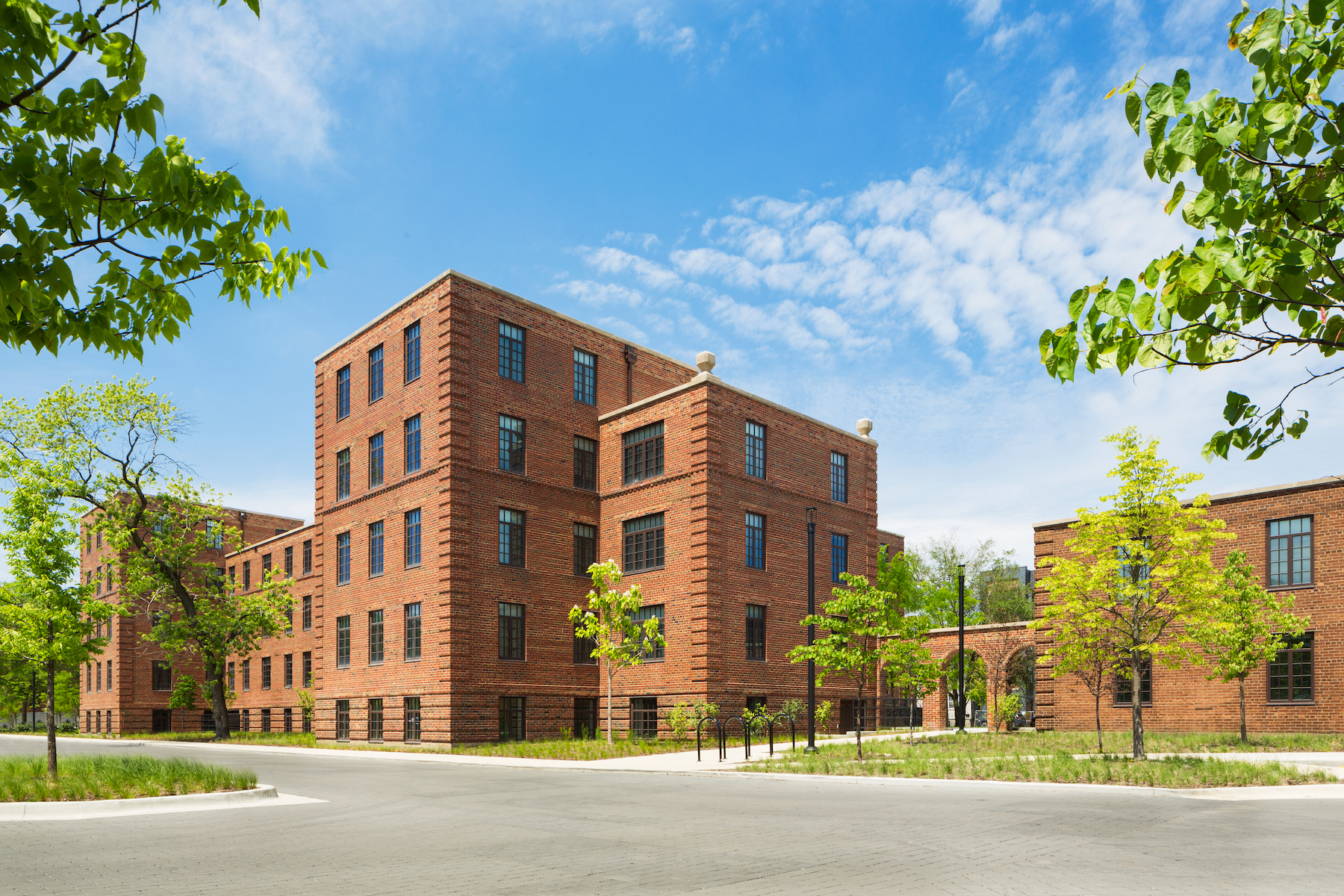On June 16, 1933, at the height of the Great Depression, Congress passed legislation creating the Public Works Administration, a key component of President Franklin D. Roosevelt’s New Deal.
The PWA’s goal was simple: to reduce unemployment—then at 25%, the highest it’s ever been—through the construction of massive public works. Out of this bold initiative would come the Grand Coulee Dam, the Lincoln Tunnel and Triborough Bridge in New York, and hundreds of courthouses, post offices, hospitals, and schools.
A less well-known piece of the PWA’s work was the construction of 52 low-rent housing projects in the U.S., the Virgin Islands, and Puerto Rico. This was the federal government’s first direct effort at building housing, a task previously left to the states, cities, and philanthropies.
The fourth-largest of these PWA public housing communities was Lathrop Homes—29 low-rise residential structures, a power station, and an administration building nestled on 34 acres along the Chicago River, on the city’s North Side. The 925-unit community opened in 1938.
Ten years ago, after decades of neglect by the Chicago Housing Authority that left just 140 of the apartments occupied, the CHA issued an RFP to consider the future of Lathrop Homes—described as “one of the most architecturally significant surviving projects from America’s first phase of public housing.”
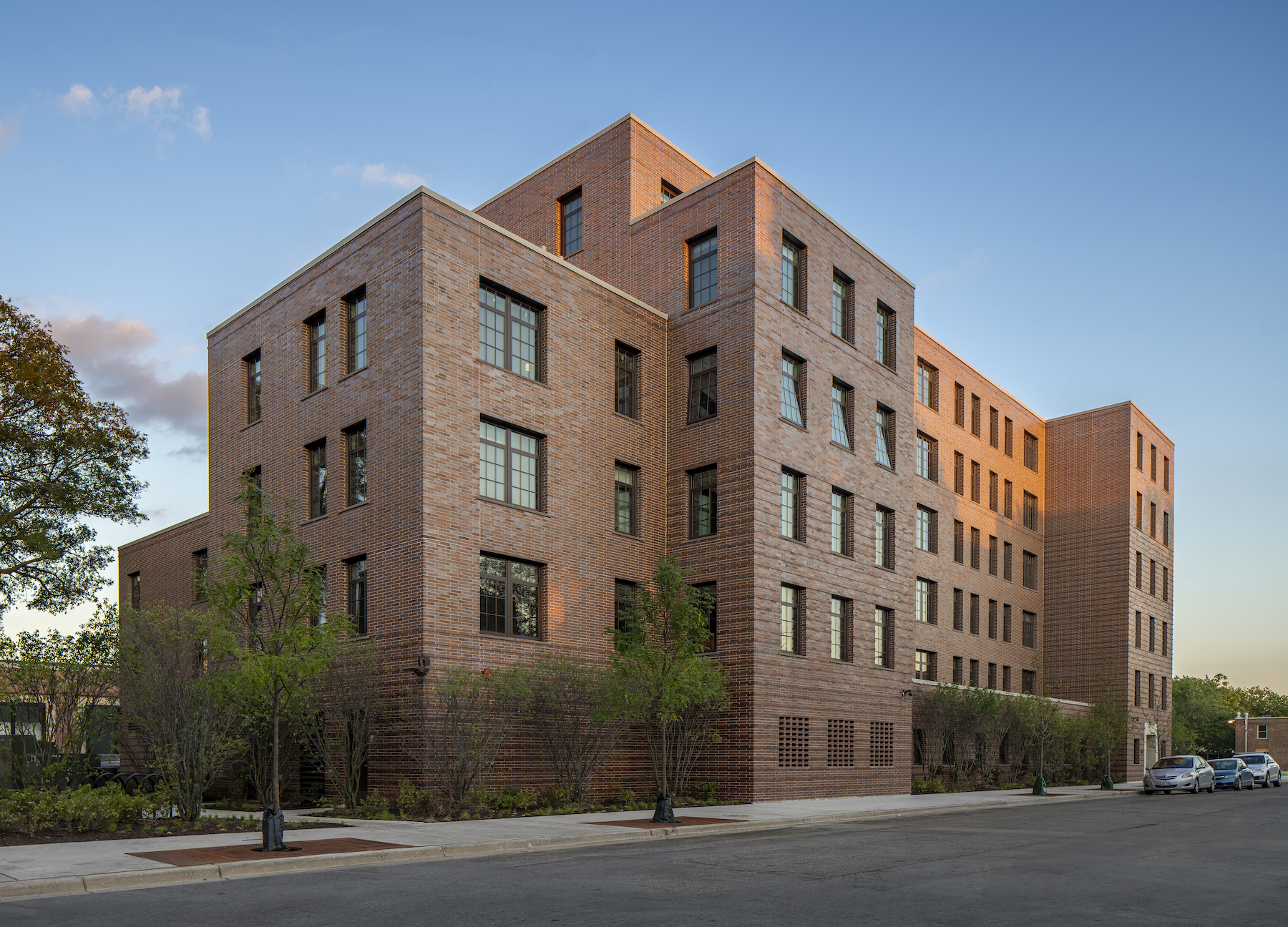
From this would emerge a plan to renovate and modernize 21 of the historic buildings, construct 12 new apartment buildings, preserve 17 acres of open space, create new linkages to the Chicago River, and add a robust menu of amenities. The Lathrop complex would eventually have 400 public, 232 affordable, and 494 market-rate housing units.
Phase 1A, completed two years ago at a cost of $200 million, saw the gut renovation of 16 of the historic buildings and construction of a new six-story structure, yielding a total of 414 apartments—151 public housing units, 91 at 60% AMI, 10 at 80% AMI, and 162 market-rate. Phase 1B, the $40 million renovation of two more historic buildings, is under way.
All units, whether public housing, affordable, or market-rate, are furnished with the same quartz kitchen countertops, Whirlpool stainless steel appliances, in-unit washer/dryers, Moen plumbing fixtures, and wide-plank flooring.
Amenities include a half-mile riverwalk and nature trail, a dog park, a children’s playground, bicycle storage, valet trash removal and recycling, maker spaces, 239 parking spaces, and a dock and kayak launch. There’s a woodshop collective on site. An independent Boys & Girls Club occupies private space at the edge of the property.
Eleven acres of open space, including the original two-acre Great Lawn, were carefully restored along historic guidelines by Michael Van Valkenburgh Associates, designers of Maggie Daley Park and The 606 trail in Chicago. MVVA added a kayak launch and circular dog park and improved connections to the Chicago River, turning what was once an eyesore into a community asset.
The massive undertaking, now known simply as Lathrop, will take years to complete. But before we go further, let’s step back for some historical perspective.
GARDEN CITIES AND PUBLIC HOUSING IN AMERICA
Lathrop Homes was designed by a team of PWA architects and engineers led by Robert Seeley De Golyer (1876-1952), a Chicago architect known primarily for designing hotels and luxury residential high-rises like The Powhatan and 1242 North Lake Shore Drive.
De Golyer’s team took their cue from Clarence Stein and Henry Wright and their associates at the Regional Planning Association of America (among them, social theorist Lewis Mumford), who in turn owed a debt to Ebenezer Howard and his 1898 book, Garden Cities of To-morrow.
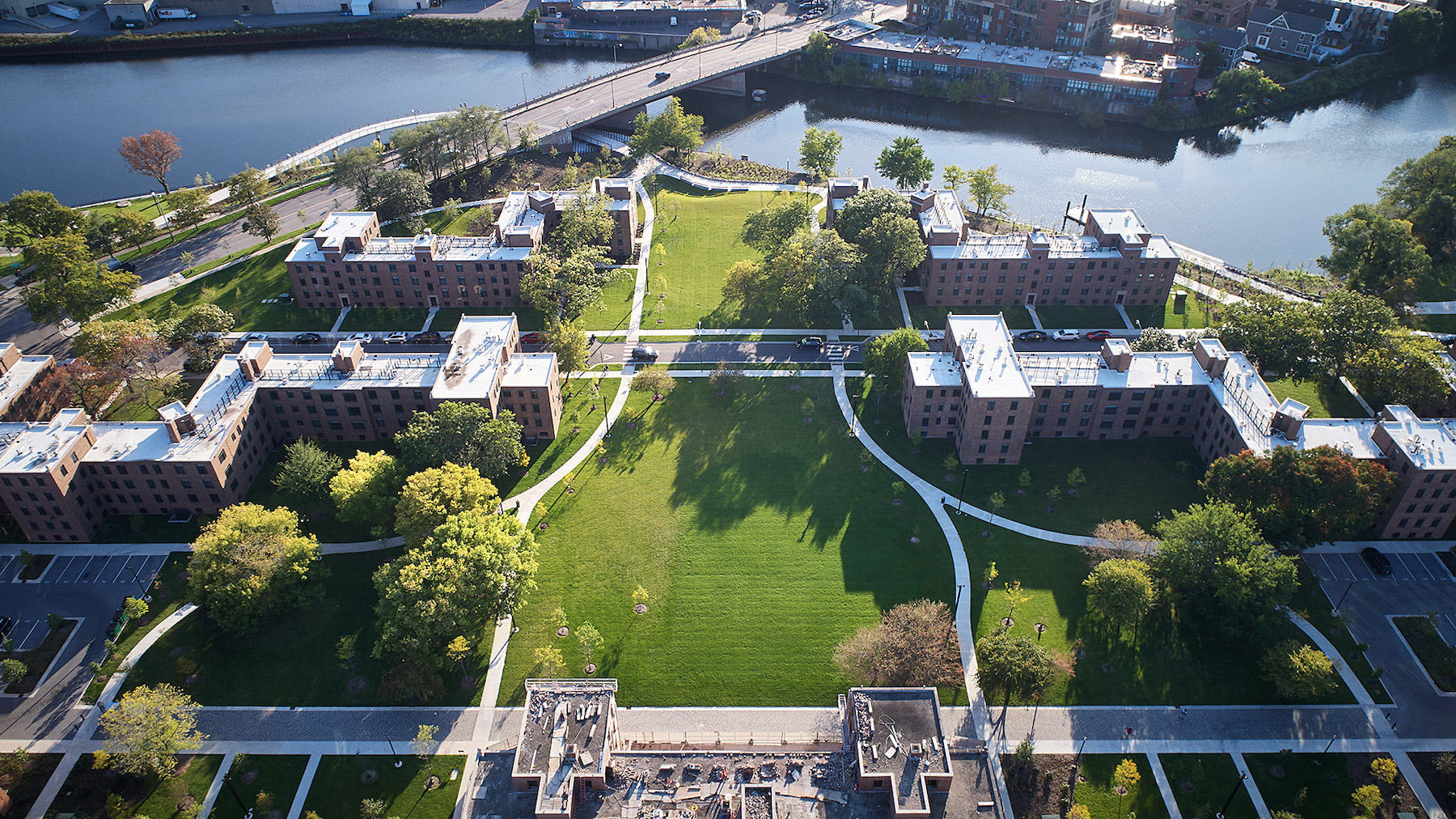
In the 1920s, Stein and Wright built Sunnyside Gardens, in Queens, N.Y., and Radburn, N.J., two such “garden cities,” which were characterized by low-scale, durable buildings, an abundance of open space, restrictions on automobile traffic, and outdoor play areas, all in the cause of promoting healthy, family-oriented communities.
Stein and Wright’s work came to fruition in 1935, when the newly established federal Housing Division issued a guidebook for PWA projects based heavily on RPAA principles.
Unit Plans, a guide to “typical room arrangements, site plans, and details for low-rent housing,” set the design framework for Lathrop Homes’ three types of living spaces: apartments (stacked, single-height units with an entry off the stair landing); row houses (two-story units with private front and rear entrances; living room and kitchen on the first floor, bedrooms and bath on the second—considered the most desirable by tenants); and a few flats (one-story units with one entrance in the front—considered the least desirable residences).
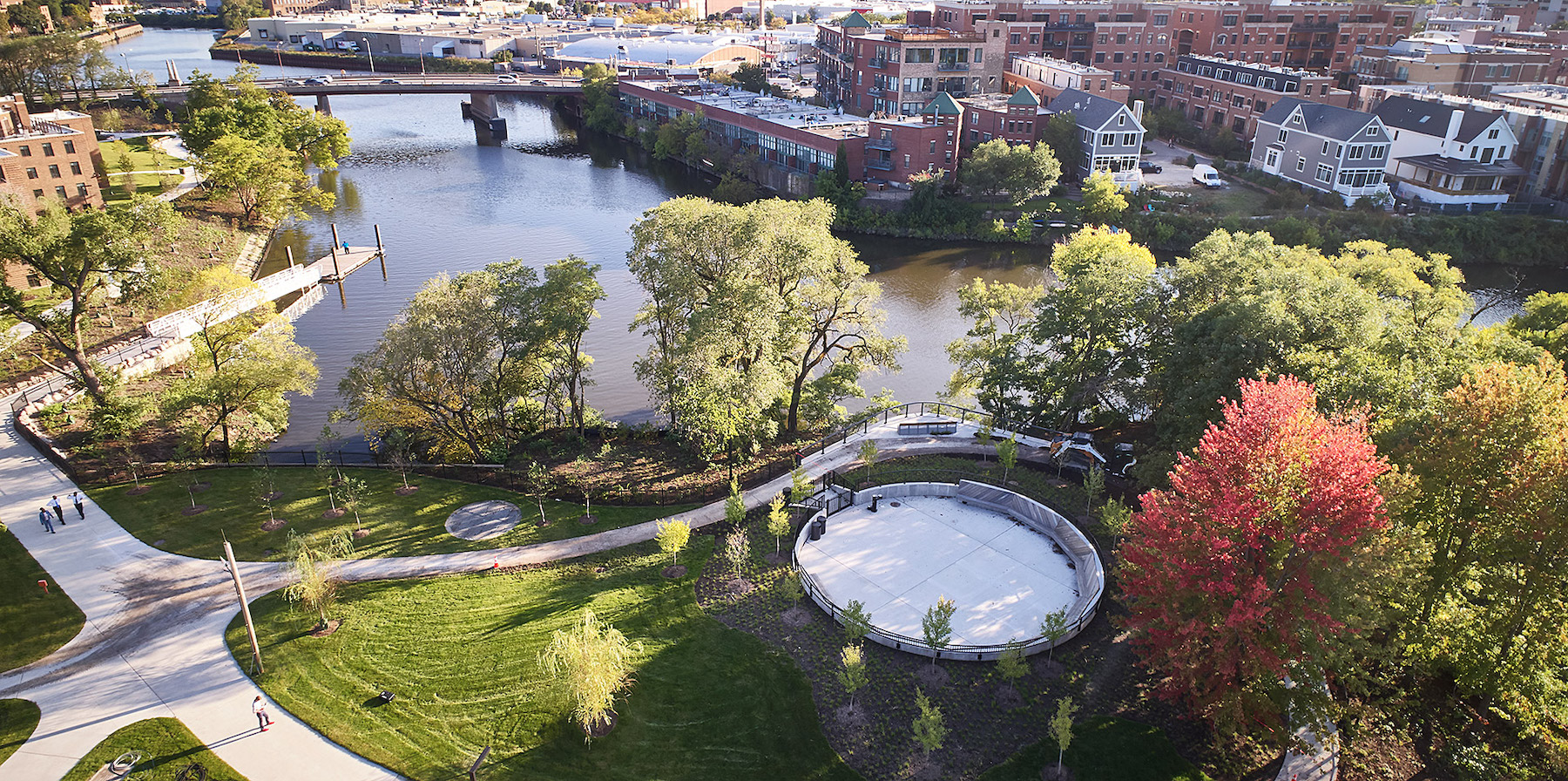
As the National Park Service would later note, this created “a united, but remarkably varied assemblage” of “simple, durable, functional, and easy to maintain” living spaces.
De Golyer hired Jens Jensen (1860-1951), the famed Danish-American landscape designer, who took an abandoned International Harvester industrial site and created 17 acres of open space—including the Great Lawn—as well as “kitchen gardens” at the rear of ground-floor apartments, where tenants could raise their own produce.
As the National Park Service would note years later, Lathrop Homes was among “the most significant projects of this period, distinguished by a well-executed site plan, as well as buildings singular in their traditional design elements and level of ornamental complexity.”
Sadly, ill-conceived housing policy at the national level and administrative incompetence at the municipal level would threaten Lathrop Homes’ standing as a paragon of PWA housing.
CHA BUNGLING, THEN A ‘PLAN FOR TRANSFORMATION’
The national program of slum clearance and urban renewal after World War II produced high-rise monstrosities like Robert Taylor Homes and Cabrini-Green, notorious for their extreme concentration of poverty, crime, and gang violence. At the same time, relatively stable public housing like Lathrop Homes suffered from chronic neglect by the CHA, to the point where, in 1995, the federal government seized control of the authority.
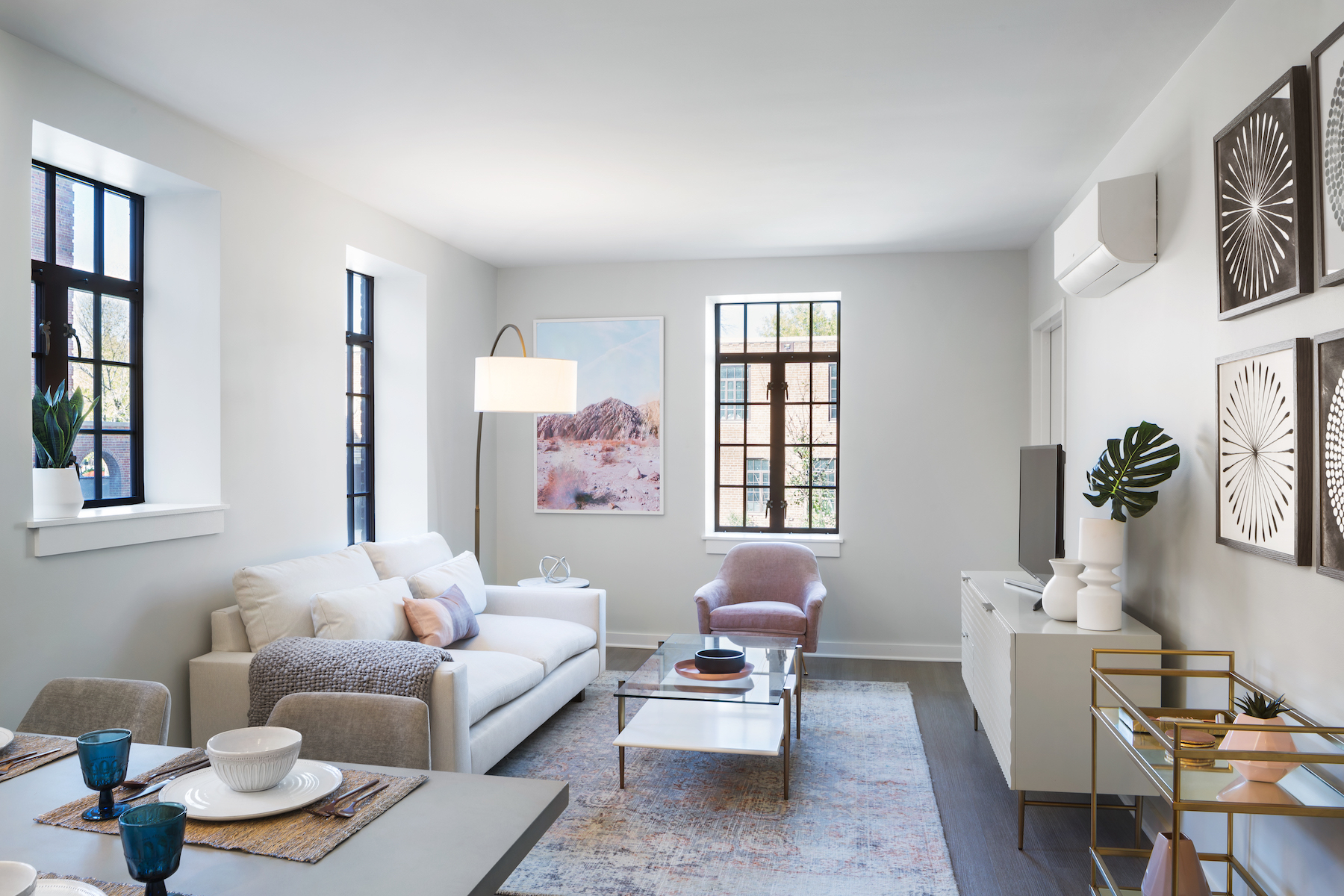
In 2000, the CHA issued a “Plan for Transformation,” which called for the demolition of 14,000 CHA apartments, including those at Robert Taylor Homes and Cabrini-Green, and the construction or renovation of 25,000 public housing units. A decade later, the CHA issued the RFP for Lathrop Homes.
‘A COMPLICATED , LONG, YET REWARDING PROCESS’
“Lathrop was as complicated and long a process as any high-rise we’ve ever done, yet so rewarding. We were involved for years before we put a shovel in the ground,” said Ann Thompson, AIA, Executive Vice President of Architecture and Design at Related Midwest, which, with nonprofits Bickerdike Redevelopment Corporation and Heartland Housing, formed the development team, Lathrop Community Partners.
Protests and tense public meetings focused attention on Lathrop’s fate. Should all 31 buildings be torn down and rebuilt new? Should they all be preserved and renovated? Should Lathrop remain 100% public housing? Would that be financially viable?
On redevelopment, the CHA took the middle route: most of the historic buildings in the north portion of the site would be renovated, but those in the south would be demolished to make room for new buildings.
As for the tenant population, “the CHA wanted a mixed-income community—public housing, affordable, and market-rate. That was the program we were given,” said Thompson. And it was the only way the project was going to pencil out. “When you’re trying to align your financing, affordable is way different from market-rate,” she said. “You have multiple sources, all with different compliance and reporting requirements, which sometimes compete with each other.”
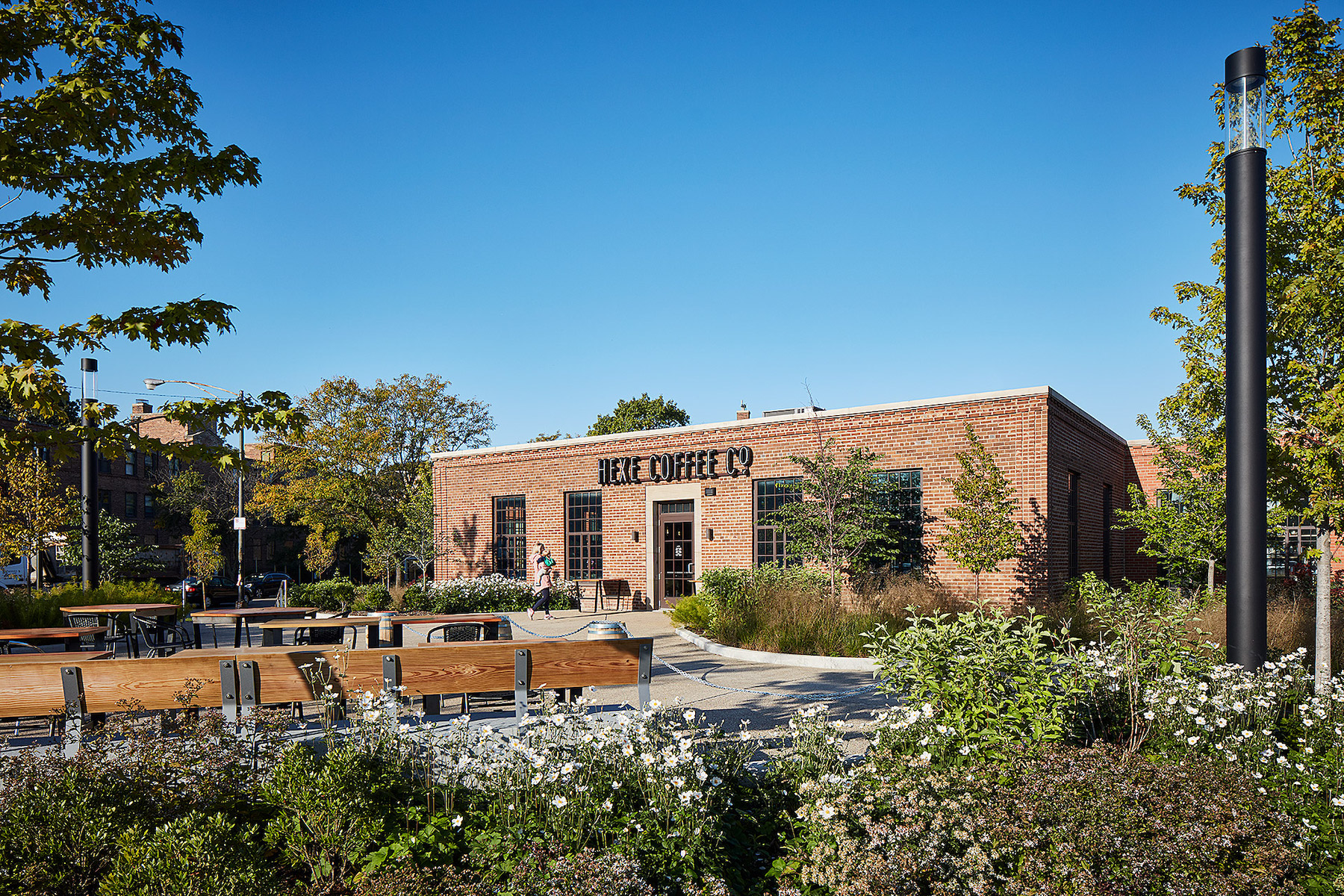
Phase 1A used eight financing mechanisms, including Low-Income, Historic, and Illinois Housing tax credits; CHA capital funds; HOME funds; a 40-year loan from the Illinois Housing Development Authority; and a 40-year Section 8 contract for the 151 public housing units.
Adding to the complexity, in 2012 the National Park Service designated the site a landmark district. Exteriors and stairwells had to meet NPS preservation standards, which sometimes led to occasionally testy discussions with the historic preservation authority. “The NPS required certain type of glass for the replacement windows, but the glass didn’t meet the energy-certification requirements we were seeking,” said Thompson. “Even the type of brick we wanted to use to patch the walls had to be negotiated.”
Achieving ADA compliance for 20% of total units posed another hurdle since accessibility was not yet a right in 1938. The lack of elevators in the historic buildings led the team to adopt a “campus-wide access” strategy: 1) renovate the ground-floor units in the historic buildings to be ADA compliant, and 2) put the rest of the required ADA units in the new six-story building, which has elevators.
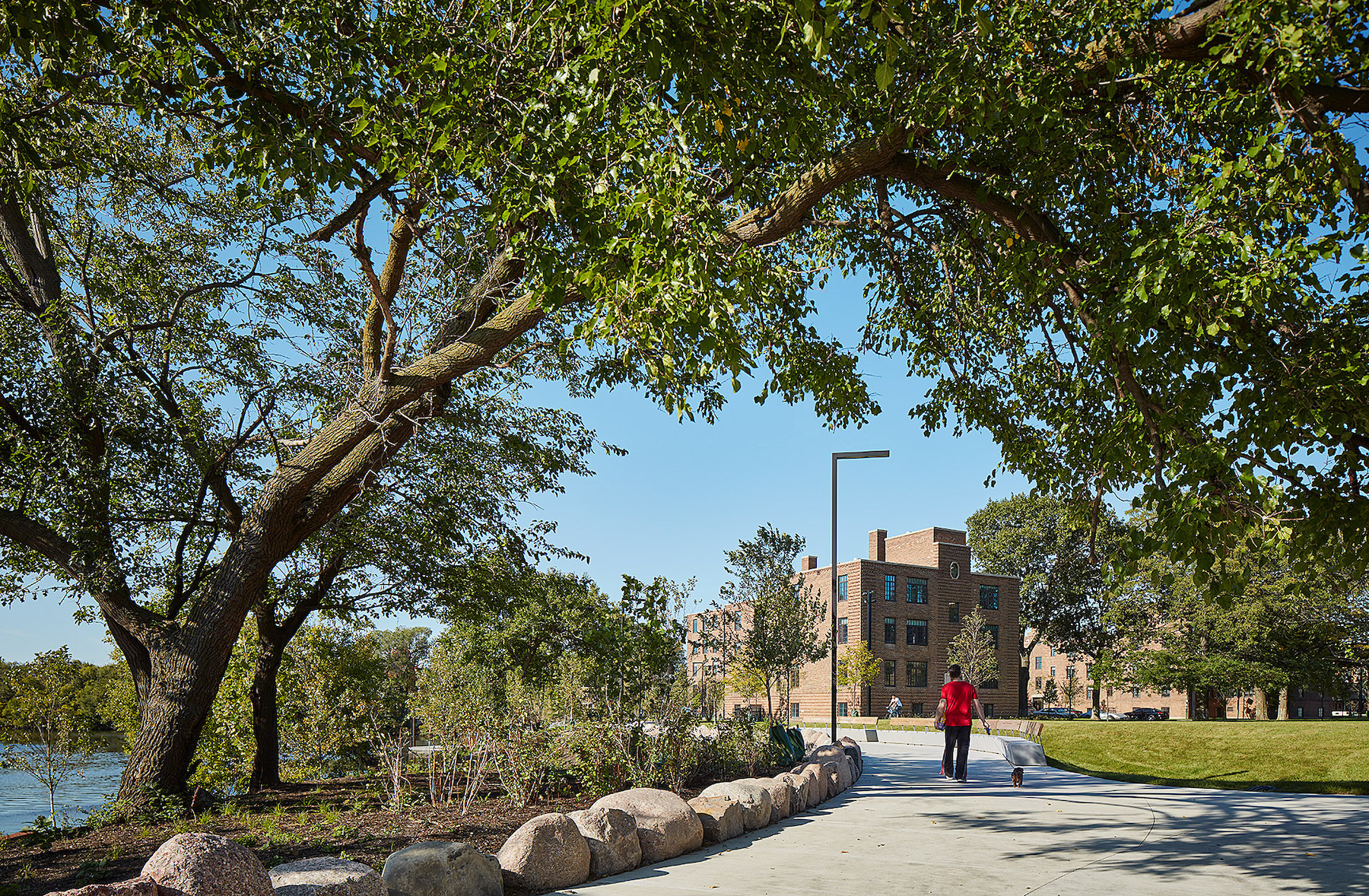
“The buildings were designed as walkups, and it would have been very tricky, if not impossible, to add elevators,” said Susan King, FAIA, LEED AP BD+C, LFA, Principal at HED, Executive Architect for Phase 1. “In terms of preserving the original character of the buildings, it’s fortunate that the campus approach was acceptable.”
ENGAGING WITH THE COMMUNITY
“Lathrop shows how important it is to engage with residents in the community,” said Thompson. She credits Related Midwest’s nonprofit partner Bickerdike Redevelopment Corporation for their outreach and resident engagement efforts. Related’s aggressive community hiring strategy led to 44% MBE/WBE participation and 48% Section 3 hires, which far exceeded what was required. She noted that Bowa Construction and MIKK Construction, the GCs on the next phase, are both minority-owned firms. (MIKK is also a WBE/DBE firm.)
“Mixed-income projects like this are very meaningful to the city of Chicago,” said Thompson. “They are complicated to do, and require a lot of patience and resilience to execute on them, but in the end, their impact lasts generations.”
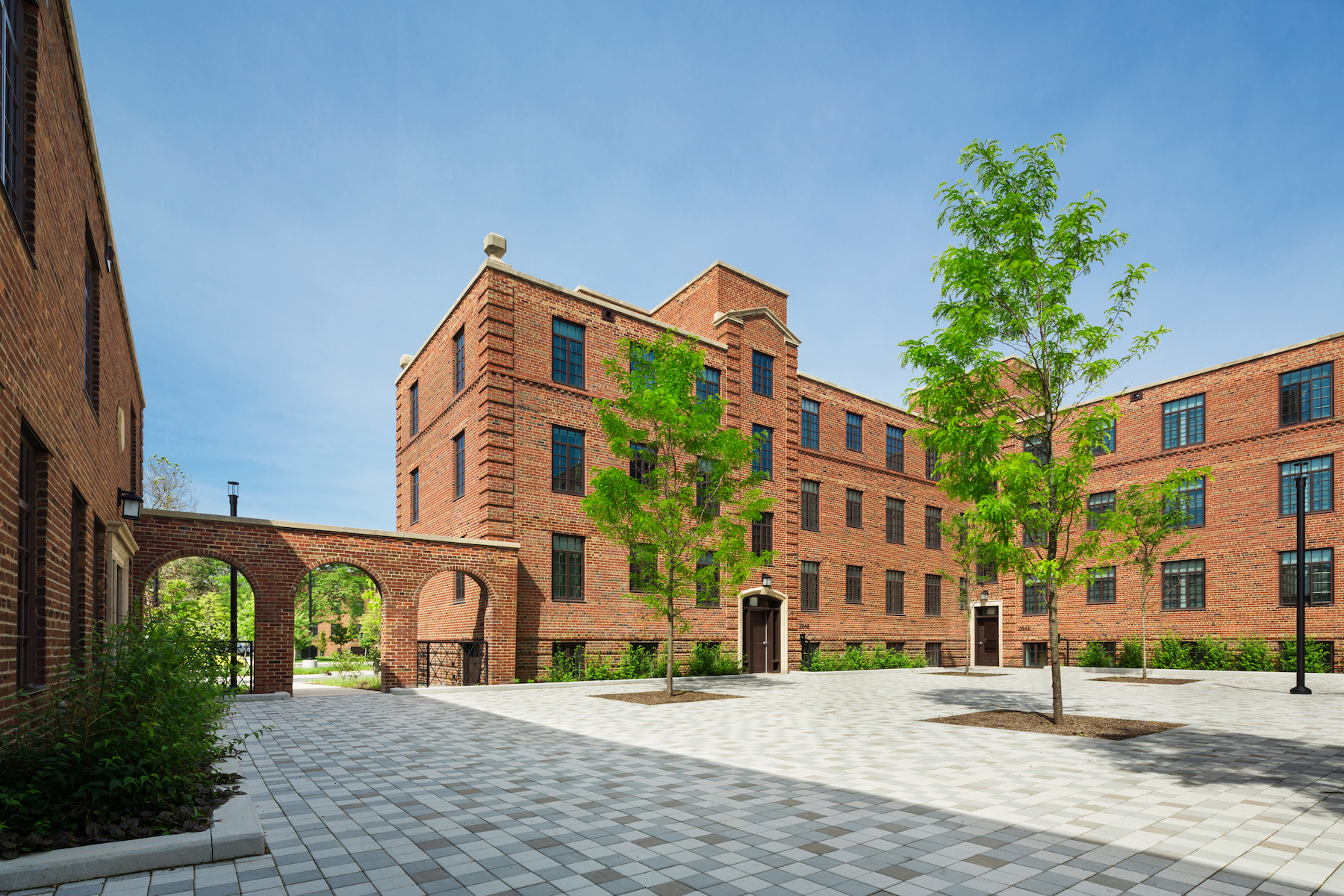
LATHROP HOMES AND THE LEGACY OF THE PWA
In the end, the Public Works Administration built just 29,000 units. Lathrop Homes remains one of its great successes, but the Lathrop of today is not the Lathrop Homes of 1938. Jensen’s kitchen gardens are gone; so, too, are most of the public housing units, replaced, out of economic necessity, by affordable and market-rate rentals. A reasonable compromise? As a nearby resident myself, I would say the overall improvements have been largely positive, but, as is always the case in this politically hypersensitive city, it depends on your perspective.
What has not been lost at Lathrop is its integral dignity and stateliness. As the National Park Service observed in designating it a landmark district, Lathrop Homes was never just a collection of buildings, but rather “a cohesive entity, designed as a unit, drawing character and strength from its consistency.” The new Lathrop preserves the refined integrity and cohesiveness of this jem of early garden-city planning, while polishing its lustre here in the 21st century. |M|
PROJECT TEAM | LATHROP
OWNER Chicago Housing Authority
DEVELOPER Lathrop Community Partners (Related Midwest, Bickerdike Redevelopment Corp., and Heartland Housing)
DESIGN ARCHITECT Juan Gabriel Moreno Architects
AOR HED (historic buildings); bKL Architecture (new building)
STRUCTURAL ENGINEER Eskenazi & Farrell Associates
CIVIL ENGINEER TERRA Engineering
MEP dbHMS
LANDSCAPE ARCHITECT Michael Van Valkenburgh Associates
LEED CONSULTANT Farr Associates GC Lendlease (Phase 1A); Bowa Construction and MIKK Construction (Phase 1B)
Related Stories
| Mar 11, 2011
Renovation energizes retirement community in Massachusetts
The 12-year-old Edgewood Retirement Community in Andover, Mass., underwent a major 40,000-sf expansion and renovation that added 60 patient care beds in the long-term care unit, a new 17,000-sf, 40-bed cognitive impairment unit, and an 80-seat informal dining bistro.
| Mar 11, 2011
Mixed-income retirement community in Maryland based on holistic care
The Green House Residences at Stadium Place in Waverly, Md., is a five-story, 40,600-sf, mixed-income retirement community based on a holistic continuum of care concept developed by Dr. Bill Thomas. Each of the four residential floors houses a self-contained home for 12 residents that includes 12 bedrooms/baths organized around a common living/social area called the “hearth,” which includes a kitchen, living room with fireplace, and dining area.
| Mar 11, 2011
Texas A&M mixed-use community will focus on green living
HOK, Realty Appreciation, and Texas A&M University are working on the Urban Living Laboratory, a 1.2-million-sf mixed-use project owned by the university. The five-phase, live-work-play project will include offices, retail, multifamily apartments, and two hotels.
| Mar 1, 2011
How to make rentals more attractive as the American dream evolves, adapts
Roger K. Lewis, architect and professor emeritus of architecture at the University of Maryland, writes in the Washington Post about the rising market demand for rental housing and how Building Teams can make these properties a desirable choice for consumer, not just an economically prudent and necessary one.
| Feb 15, 2011
New Orleans' rebuilt public housing architecture gets mixed reviews
The architecture of New Orleans’ new public housing is awash with optimism about how urban-design will improve residents' lives—but the changes are based on the idealism of an earlier era that’s being erased and revised.
| Feb 11, 2011
Chicago high-rise mixes condos with classrooms for Art Institute students
The Legacy at Millennium Park is a 72-story, mixed-use complex that rises high above Chicago’s Michigan Avenue. The glass tower, designed by Solomon Cordwell Buenz, is mostly residential, but also includes 41,000 sf of classroom space for the School of the Art Institute of Chicago and another 7,400 sf of retail space. The building’s 355 one-, two-, three-, and four-bedroom condominiums range from 875 sf to 9,300 sf, and there are seven levels of parking. Sky patios on the 15th, 42nd, and 60th floors give owners outdoor access and views of Lake Michigan.
| Feb 11, 2011
Sustainable community center to serve Angelinos in need
Harbor Interfaith Services, a nonprofit serving the homeless and working poor in the Harbor Area and South Bay communities of Los Angeles, engaged Withee Malcolm Architects to design a new 15,000-sf family resource center. The architects, who are working pro bono for the initial phase, created a family-centered design that consolidates all programs into a single building. The new three-story space will house a resource center, food pantry, nursery and pre-school, and administrative offices, plus indoor and outdoor play spaces and underground parking. The building’s scale and setbacks will help it blend with its residential neighbors, while its low-flow fixtures, low-VOC and recycled materials, and energy-efficient mechanical equipment and appliances will help it earn LEED certification.
| Feb 11, 2011
Apartment complex caters to University of Minnesota students
Twin Cities firm Elness Swenson Graham Architects designed the new Stadium Village Flats, in the University of Minnesota’s East Bank Campus, with students in mind. The $30 million, six-story residential/retail complex will include 120 furnished apartments with fitness rooms and lounges on each floor. More than 5,000 sf of first-floor retail space and two levels of below-ground parking will complete the complex. Opus AE Group Inc., based in Minneapolis, will provide structural engineering services.
| Jan 27, 2011
Perkins Eastman's report on senior housing signals a changing market
Top international design and architecture firm Perkins Eastman is pleased to announce that the Perkins Eastman Research Collaborative recently completed the “Design for Aging Review 10 Insights and Innovations: The State of Senior Housing” study for the American Institute of Architects (AIA). The results of the comprehensive study reflect the changing demands and emerging concepts that are re-shaping today’s senior living industry.
| Jan 21, 2011
Harlem facility combines social services with retail, office space
Harlem is one of the first neighborhoods in New York City to combine retail with assisted living. The six-story, 50,000-sf building provides assisted living for residents with disabilities and a nonprofit group offering services to minority groups, plus retail and office space.


